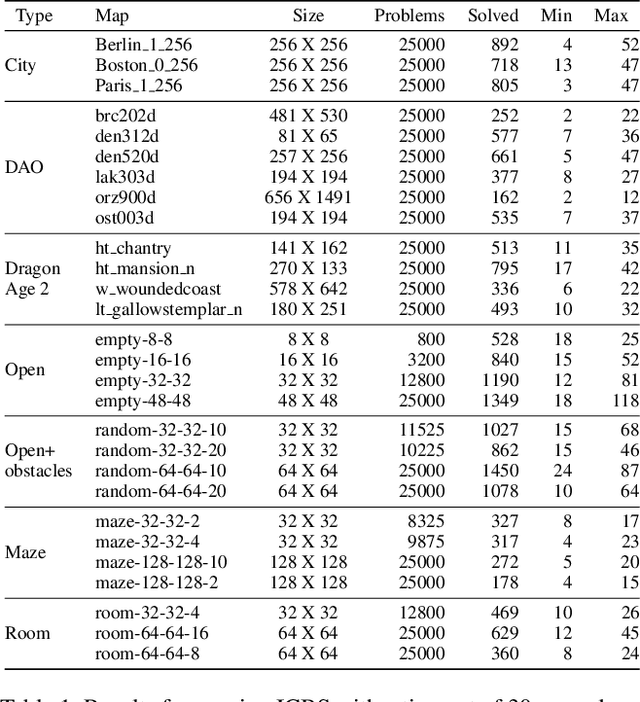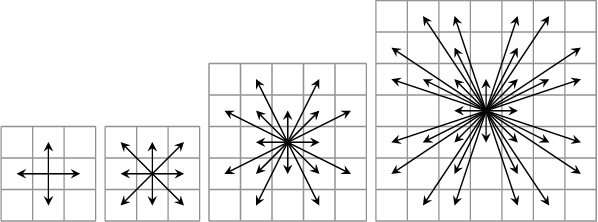Dor Atzmon
Multi-Agent Pathfinding: Definitions, Variants, and Benchmarks
Jun 19, 2019



Abstract:The MAPF problem is the fundamental problem of planning paths for multiple agents, where the key constraint is that the agents will be able to follow these paths concurrently without colliding with each other. Applications of MAPF include automated warehouses and autonomous vehicles. Research on MAPF has been flourishing in the past couple of years. Different MAPF research papers make different assumptions, e.g., whether agents can traverse the same road at the same time, and have different objective functions, e.g., minimize makespan or sum of agents' actions costs. These assumptions and objectives are sometimes implicitly assumed or described informally. This makes it difficult to establish appropriate baselines for comparison in research papers, as well as making it difficult for practitioners to find the papers relevant to their concrete application. This paper aims to fill this gap and support researchers and practitioners by providing a unifying terminology for describing common MAPF assumptions and objectives. In addition, we also provide pointers to two MAPF benchmarks. In particular, we introduce a new grid-based benchmark for MAPF, and demonstrate experimentally that it poses a challenge to contemporary MAPF algorithms.
Multi-Agent Pathfinding (MAPF) with Continuous Time
Jan 16, 2019



Abstract:MAPF is the problem of finding paths for multiple agents such that every agent reaches its goal and the agents do not collide. Most prior work on MAPF were on grid, assumed all actions cost the same, agents do not have a volume, and considered discrete time steps. In this work we propose a MAPF algorithm that do not assume any of these assumptions, is complete, and provides provably optimal solutions. This algorithm is based on a novel combination of SIPP, a continuous time single agent planning algorithms, and CBS, a state of the art multi-agent pathfinding algorithm. We analyze this algorithm, discuss its pros and cons, and evaluate it experimentally on several standard benchmarks.
 Add to Chrome
Add to Chrome Add to Firefox
Add to Firefox Add to Edge
Add to Edge